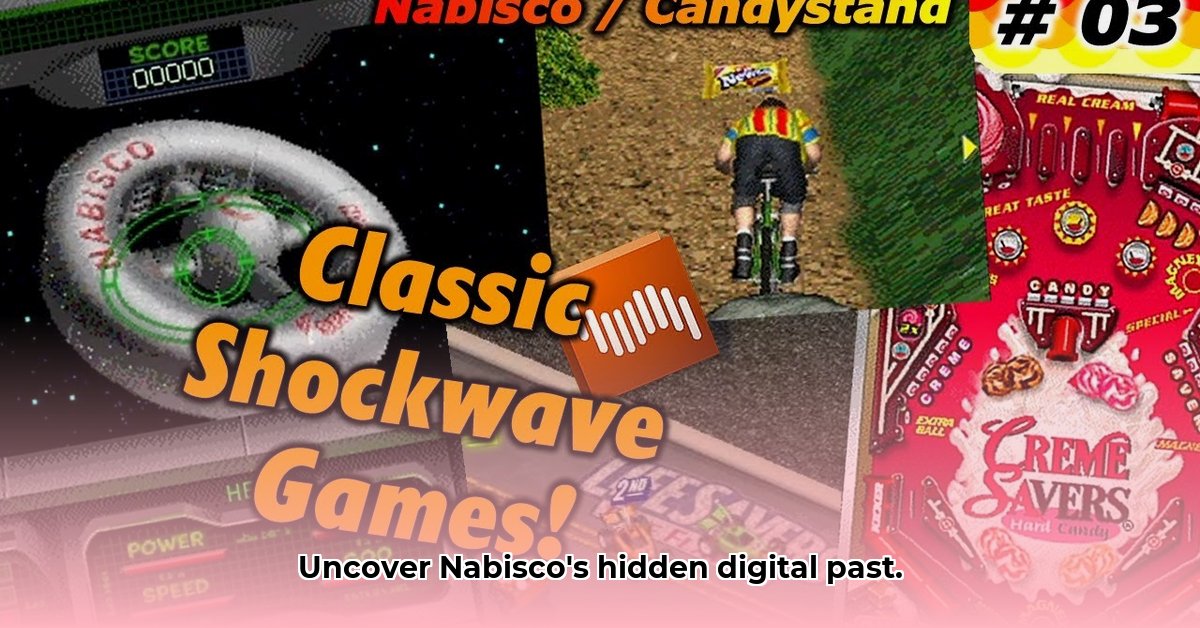
Nabiscoworld: A Digital Ghost Town
Remember the dial-up squeal, the clunky banner ads, and the surprisingly addictive games hidden within websites of the late 1990s and early 2000s? Many recall Candystand, a persistent online advergame haven. But fewer remember Nabiscoworld, a vibrant platform brimming with games now largely lost to the digital ether—a cautionary tale of technological obsolescence and the fragility of digital memory. What happened? Why did one platform survive while the other crumbled into a digital ghost town? The answer lies in a complex interplay of technology, corporate decisions, and the often-overlooked importance of digital preservation.
The Rise and Fall of Flash-Based Fun
Both Nabiscoworld and Candystand, launched during the peak of Flash animation, offered surprisingly sophisticated games given the limitations of early internet speeds. These weren't just idle diversions; they were advergames, cleverly disguised advertisements aimed at building brand loyalty among younger audiences. This strategy, while clever, proved to be a double-edged sword.
A Tale of Two Platforms
Candystand, for reasons still debated by digital preservationists, adapted and survived. But Nabiscoworld, a far more extensive collection of games, is largely inaccessible today. This stark contrast raises a crucial question: How can we prevent similar digital losses in the future? The disappearance of Nabiscoworld isn't merely a nostalgic lament; it's a critical case study in the ephemeral nature of digital assets.
Unraveling the Mystery of Nabiscoworld's Demise
Several factors contributed to Nabiscoworld's downfall. The changing ownership structure—from Nabisco to Kraft, eventually becoming Mondelez—played a significant role. As corporate priorities shifted, preserving the digital assets of a past marketing campaign likely fell by the wayside. Furthermore, the reliance on Flash technology proved catastrophic. When Adobe discontinued support for Flash in 2020, countless games became unplayable without extensive and costly conversions to HTML5 or other modern technologies. This wasn't unique to Nabisco; many similar advergame platforms faced extinction, raising the critical question: What percentage of early online games have been irretrievably lost due to technological obsolescence? Estimates suggest a significant portion remains unrecovered.
Learning from the Past: An Urgent Need for Digital Preservation
The story of Nabiscoworld isn't simply a historical curiosity; it's a stark warning about the vulnerability of digital memories. This loss signifies the urgency of proactive digital preservation strategies, not only for corporations but for individuals and archivists alike.
The Future of Digital Archiving: Saving Our Digital Heritage
The near-total loss of Nabiscoworld's games necessitates immediate action. We need:
- Standardized Metadata: Consistent data about games helps in cataloging and searching, much like a library cataloguing system. This ensures discoverability and facilitates access to preserved games.
- Centralized Archives: Specifically designed archives for digital games would act as digital museums, preventing future losses.
- Open-Source Tools: Adopting open-source formats for game development simplifies updating and preserving digital games in the long term.
- Clear Legal Frameworks: Robust legal guidelines are needed to clarify ownership and usage rights surrounding digital assets, preventing future controversies.
The lessons learned from Nabiscoworld should inform future policies; it's about preserving cultural heritage in the digital domain.
Practical Steps for Digital Preservation
| Stakeholder | Immediate Actions | Long-Term Strategies |
|---|---|---|
| Digital Archivists | Prioritize archiving varied game types; utilize web archiving tools | Develop guidelines, secure funding, & collaborate for large-scale preservation |
| Game Developers | Use open-source tools, build with future compatibility in mind | Integrate preservation into the development lifecycle |
| Corporations | Develop internal digital asset preservation plans | Collaborate with archives and engage in responsible data management |
| Museums & Cultural Institutions | Actively collect and showcase digital games | Create educational programs on digital preservation best practices |
The loss of Nabiscoworld's games serves as a potent reminder. Proactive digital preservation isn't merely advisable; it's essential. The future of our digital heritage demands immediate attention and concerted action. The ghost of Nabiscoworld compels us to act.